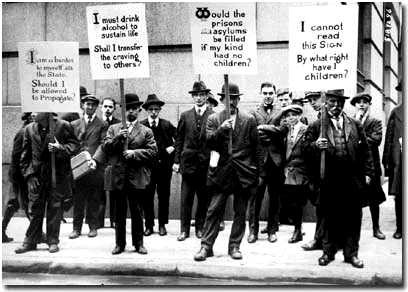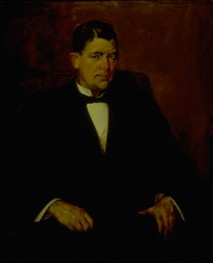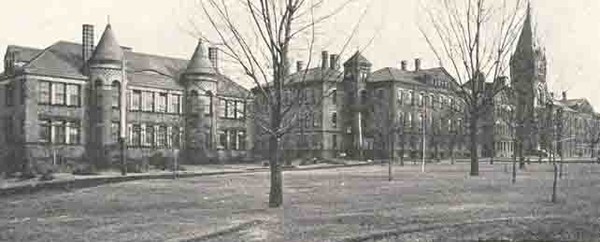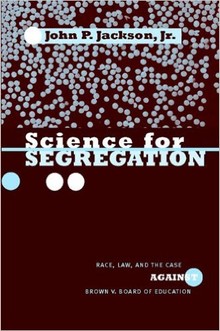1907 Indiana Eugenics Law
Introduction
Text-to-speech Audio
Images
Historical marker describing the 1907 Indiana Eugenics Law

Eugenics supporters in New York City

Governor James Frank Hanly, who signed the 1907 bill

Fort Wayne State School for Feeble Minded Youth, which provided the majority of sterilizations

To learn more about the history of Eugenics and racial discrimination, please read Science for Segregation: Race, Law, and the Case against Brown v. Board of Education

Backstory and Context
Text-to-speech Audio
History of the Law
The 1907 Indiana Eugenics Law was not a surprise, and the movement that led to the bill's passing dates back to, at least, the biological ideas of Sir Francis Galton in the 1880s as well as Progressive Era beginning in the US.
At the time, as the Industrial Revolution was in full swing, and a widening gap between the rich and the poor was growing. Among labor and social reforms associated with the Progressives, such as child labor laws and food and drug regulations, the idea of inherited, negative personality traits was a common theme. This was also based on, in part, an 1879 paper presented to the Social Science Association of Indiana, in which Harriet Foster claimed that imbeciles and the feeble-minded would inherit those traits from their parents.
It was these ideas, among many others, that led Indiana governor J. Frank Hanly to sign the eugenics law. The Indiana Supreme Court later struck down the law in 1921, though six years later in 1927, the legislature succeeded in passing a second law. From 1927 until 1974, more than 2,300 Indiana citizens were involuntarily sterilized.1
1907 Indiana Eugenics Law (1907) Text
CHAPTER 215.
AN ACT entitled an act to prevent procreation of confirmed criminals, idiots, imbeciles and rapists; providing that superintendents and boards of managers of institutions where such persons are confined shall have the authority and are empowered to appoint a committee of experts, consisting of two (2) physicians, to examine into the mental condition of such inmates.
[H. 364. Approved March 9, 1907.]
Preamble.
Whereas, Heredity plays a most important part in the trans-mission of crime, idiocy and imbecility;
Penal Institutions—Surgical Operations.
Therefore, Be it enacted by the general assembly of the State of Indiana, That on and after the passage of this act it shall be compulsory for each and every institution in the state, entrusted with the care of confirmed criminals, idiots, rapists and imbeciles, to appoint upon its staff, in addition to the regular institutional physician, two (2) skilled surgeons of recognized ability, whose duty it shall be, in conjunction with the chief physician of the institution, to examine the mental and physical condition of such inmates as are recommended by the institutional physician and board of managers. If, in the judgment of this committee of experts and the board of managers, procreation is inadvisable and there is no probability of improvement of the mental condition of the inmate, it shall be lawful for the surgeons to perform such operation for the prevention of procreation as shall be decided safest and most effective. But this operation shall not be performed except in cases that have been pronounced unimprovable: Provided, That in no case shall the consultation fee be more than three ($3.00) dollars to each expert, to be paid out of the funds appropriated for the maintenance of such institution.2
Inscription on the Historical Marker
Marker Front:
By late 1800s, Indiana authorities believed criminality, mental problems, and pauperism were hereditary. Various laws were enacted based on this belief. In 1907, Governor J. Frank Hanly approved first state eugenics law making sterilization mandatory for certain individuals in state custody. Sterilizations halted 1909 by Governor Thomas R. Marshall.
Marker Back:
Indiana Supreme Court ruled 1907 law unconstitutional 1921, citing denial of due process under Fourteenth Amendment. A 1927 law provided for appeals in the courts. Approximately 2,500 people in state custody were sterilized. Governor Otis R. Bowen approved repeal of all sterilization laws 1974; by 1977, related restrictive marriage laws repealed.3
